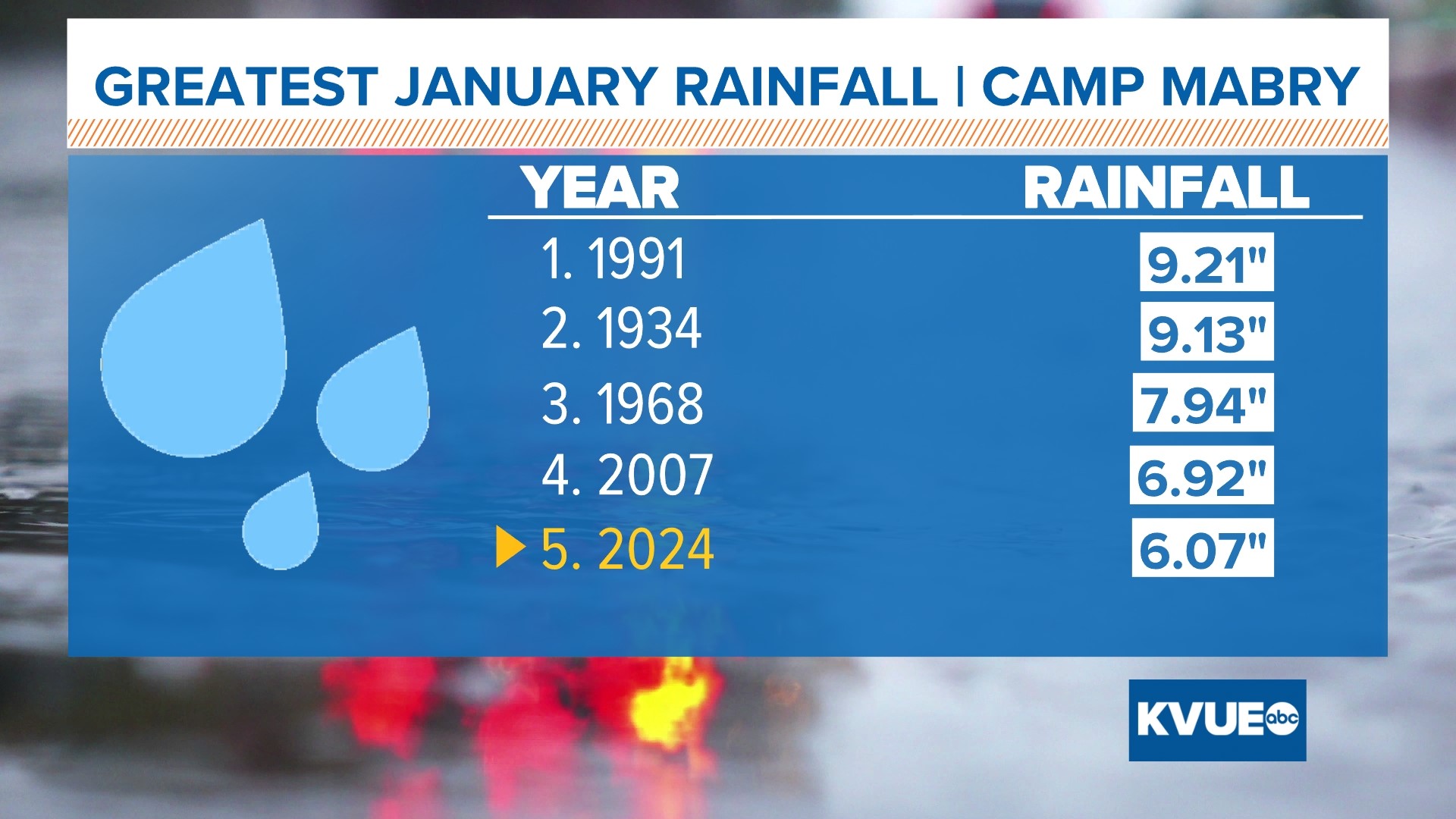AUSTIN, Texas — We had a much wetter and cooler January than normal. This is a result of the El Niño pattern that we've been predicting and what has verified.
Here's a breakdown of how January played out in the Austin area.
Rainfall
We had 6.07 inches of rain through the month of January, the fifth-wettest January of all time at Camp Mabry, behind 1991, 1934, 1968,and 2007 and just seven-hundredths of an inch ahead of 1932.
The Austin-Bergstrom International Airport also had its fifth-wettest January on record, behind 1991, 2007, 1968 and 2012.

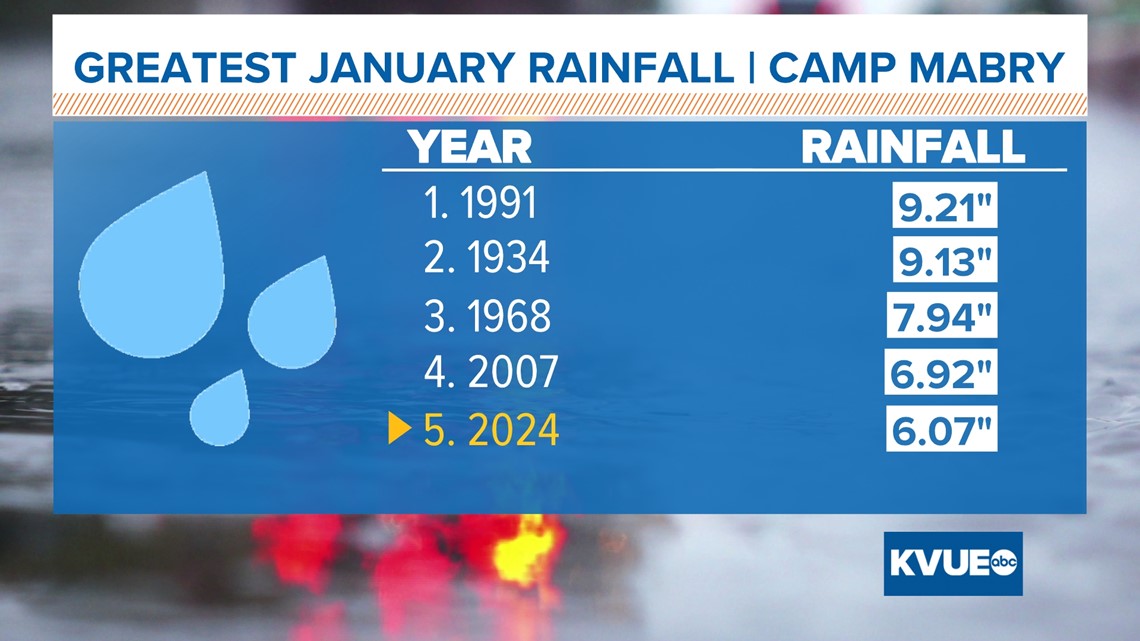
This rain was well above our average for January and for the year, which sits at just over 2.5 inches. This is great news in the effort to mitigate our drought situation, as above-average rainfall alleviates our soils and, depending on where the heaviest rain falls, it can even lead to a positive impact on our Highland Lakes. However, we haven't really seen that impact.

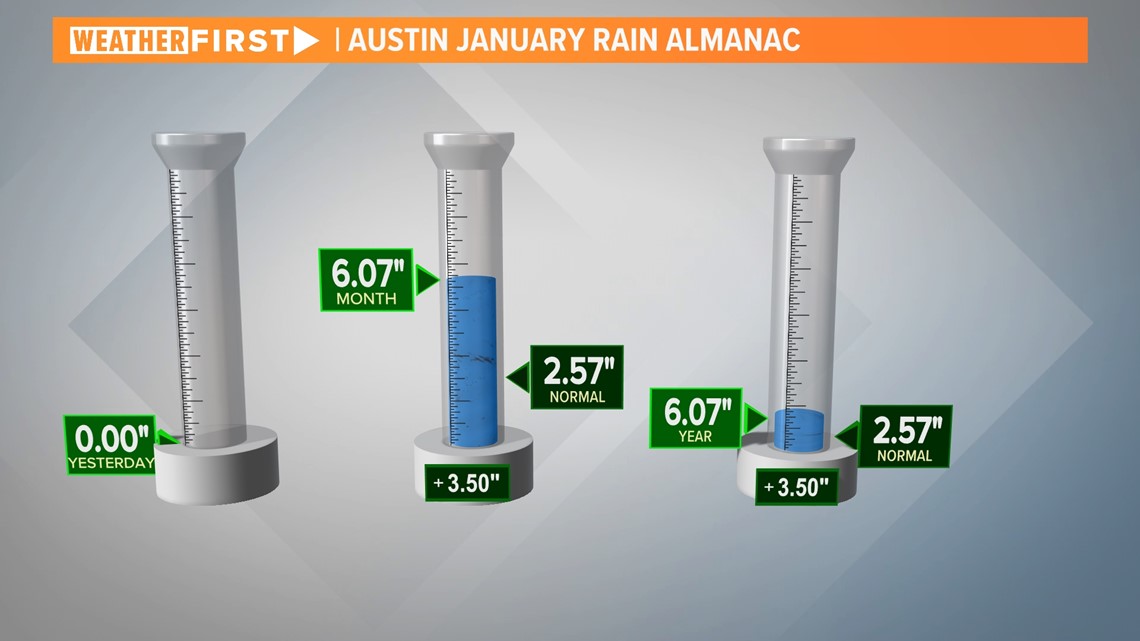
Temperatures
Temperature-wise, Camp Mabry and the Austin-Bergstrom International Airport both finished below average, with average temperatures of 47.3 and 45.9, respectively. This places Camp Mabry at the No. 24 spot on the all-time coldest January rankings. The airport placed at No. 12.

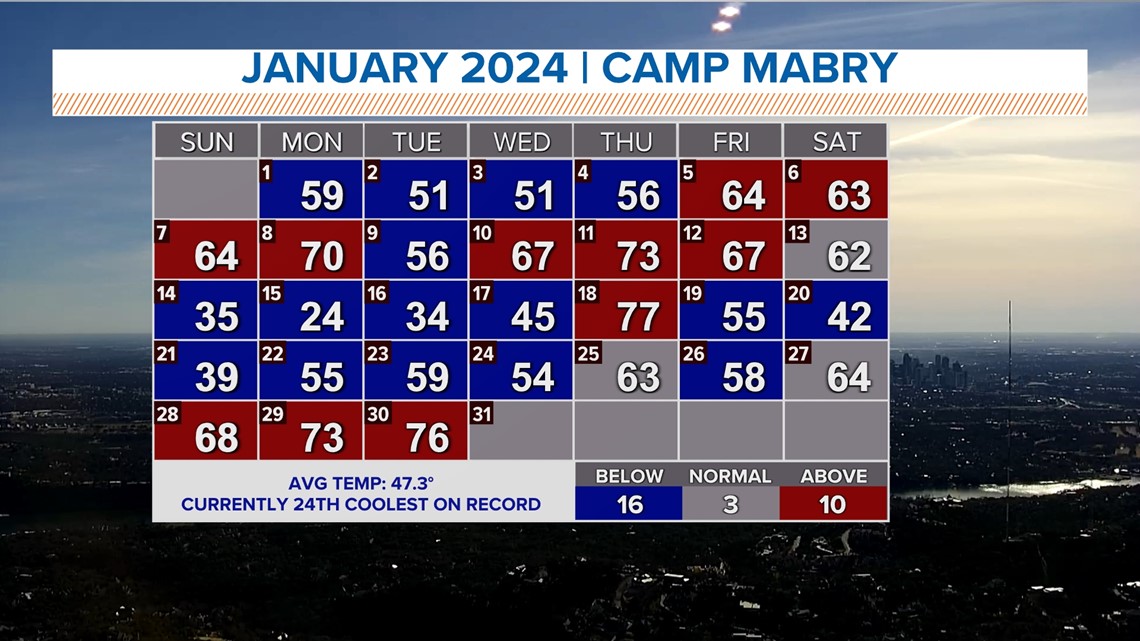
El Niño and its effect on our January
As forecasted, El Niño has had an impact on how this year's January shaped up. With the warm water near the Galapagos Islands not being pushed by the trade winds like it normally would, this has resulted in a cooler and wetter Central Texas during the winter months.

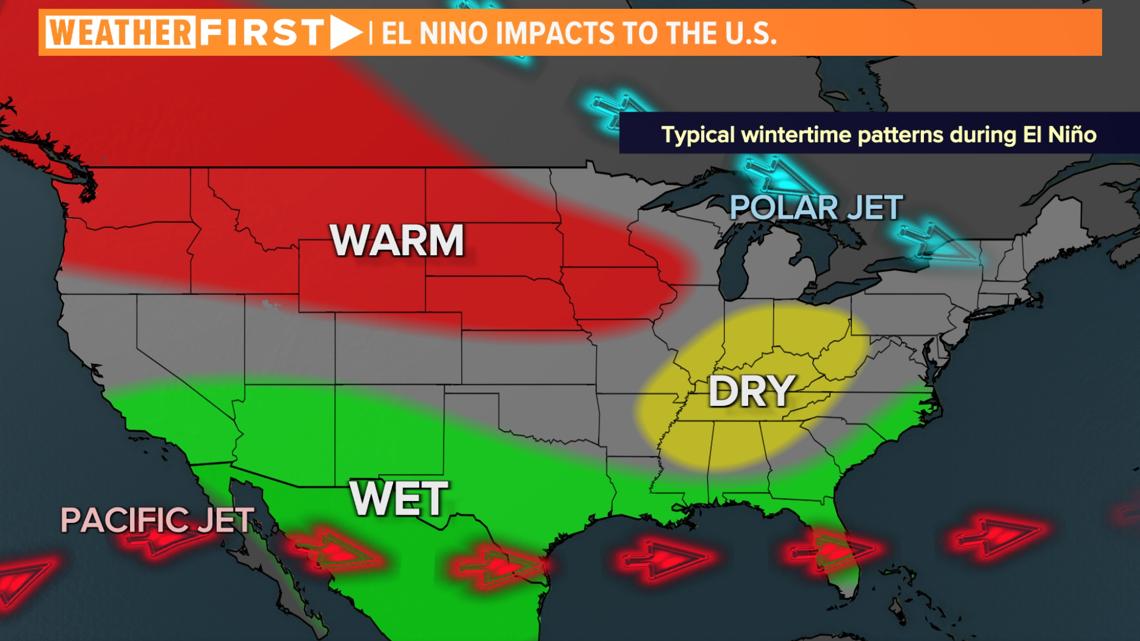
With January's rainfall well above average for the month and the average temperature being below average, we can conclude the El Niño forecast has been verified. Rainfall for the month was similar to the entire winter of 1982-1983, which was a particularly strong El Niño.
Depending on how February plays out, meteorological winter could finish with totals at Camp Mabry similar to the winter of 1997-1998, where more than 10 inches of rain fell for the season. In fact, January by itself surpassed the winter of 2015-2016, where we had nearly 5 inches of rain for the entire season.

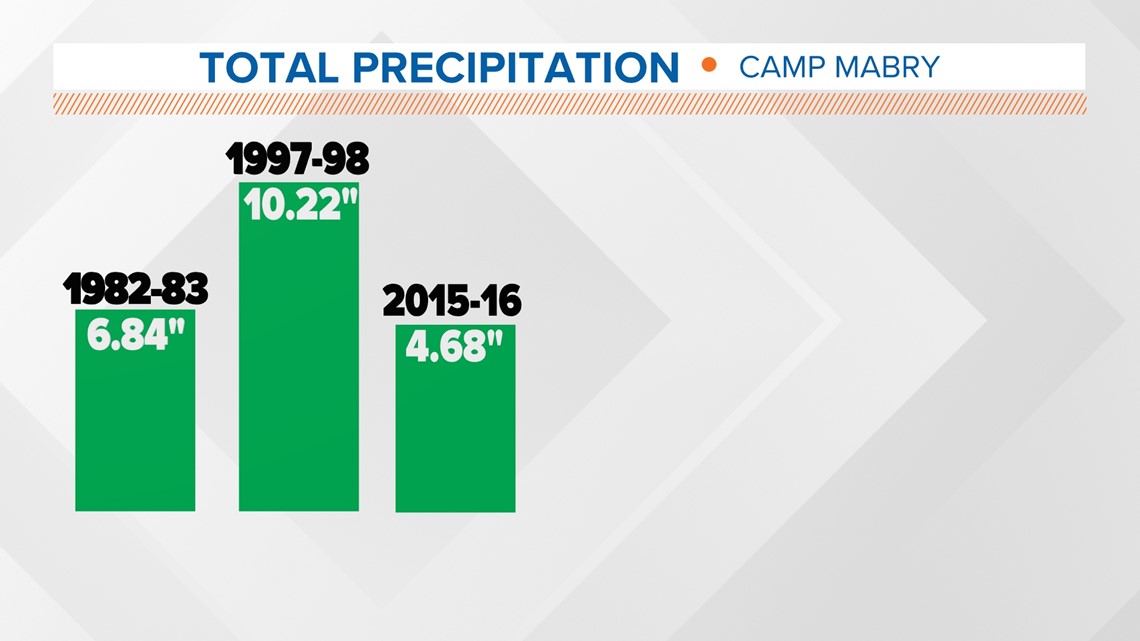
Stick with KVUE as we track February's totals as this El Niño pattern continues.

